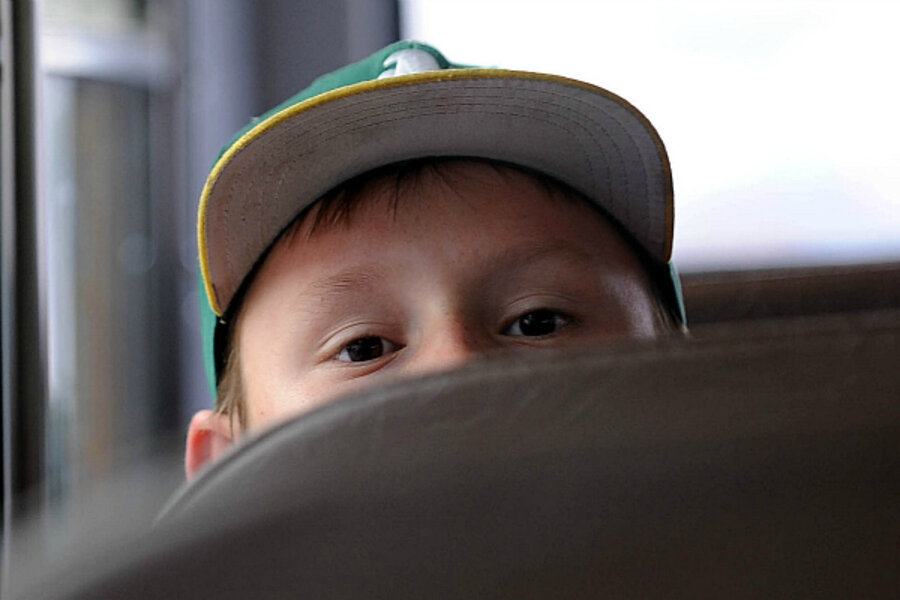Homeless children at record high in US. Can the trend be reversed?
Loading...
More children than ever before in America are going to sleep at night without a home to call their own.
One out of every 45 children – some 1.6 million – in the United States is homeless, according to a report released Tuesday by the National Center on Family Homelessness. The majority of the children are under age 7.
The number of homeless children in 2010 exceeded even the total in 2006, when thousands of families displaced by hurricanes Katrina and Rita produced a historic spike in homelessness. Last year, at least 60,000 more children were homeless.
Homelessness among America’s youths can have far-reaching consequences.
“If you believe that children are the future of our country, then you should be concerned because these homeless children have gradually become a prominent part of a third world that is emerging in our own backyards,” says Ellen Bassuk, president of the National Center on Family Homelessness in Needham, Mass.
The factors that can lead to child homelessness, such as extreme poverty and worst-case housing needs, have worsened with the economic recession – even though total housing capacity for families increased by more than 15,000 units in the past four years.
“The recession has been a man-made disaster for vulnerable children,” Ms. Bassuk says.
The National Center’s findings were released in its “America’s Youngest Outcasts 2010” report, which documents the number of homeless children in each state and their well-being. It also evaluates the risk for child homelessness and state-level planning and policy activities.
“Despite their growing numbers, homeless children are invisible to most of us; they have no voice and no constituency,” the report says. “Without a bed to call their own, these children have lost safety, privacy, and the comforts of home, as well as their friends, possessions, pets, reassuring routines and communities.”
Children experiencing homelessness also tend to struggle with hunger, poor health, and missed educational opportunities. A majority of homeless children have limited proficiency in math and reading, according to the report.
Compared with their housed counterparts, homeless children, in general, exhibit twice as many illnesses, such as respiratory infections, per month, according to a report by Ellen Hart-Shegos for the Family Housing Fund in Minneapolis.
Furthermore, Bassuk says, homelessness affects the emotional health of children.
“When you talk to adolescents and younger school-aged kids, they’re universally incredibly embarrassed about being homeless,” she says. “It’s a stigmatized situation for a kid who wants to be accepted by their peers, and when they’re ashamed, they will do anything to make sure their friends don’t find out.”
Since 2007, the homeless child population in 15 states increased by more than 50 percent. States with the highest percentages of homeless children were generally located in the South and Southwest, reflecting the higher levels of poverty in these states. States with the lowest percentages were generally located in the North and Northeast, where there is less poverty and stronger safety nets for children.
To combat homelessness, the most essential tool is further increasing the availability of decent, affordable housing, Bassuk says. Studies show that housing promotes health, improves educational outcomes, reduces stress, and provides a safe environment in which children can grow and thrive.
Bassuk also says that the Recovery Act's Homelessness Prevention and Rapid Re-Housing Program must not be allowed to expire at the end of the year. Since 2009, this program has helped more than 1 million formerly homeless people into permanent housing.
But housing alone is not sufficient, says Bassuk.
"It must be aligned with critical services and supports if families are to remain stably housed in the community," the report says.
Bassuk warns against any further cuts to federal and state programs that provide such services and supports. These programs include job training, child-care services, and domestic-violence prevention.
Homeless children can end up making a positive contribution to society, points out Bassuk.
“These kids are no different than your kids or my kids. They have every potential to thrive and participate in building the nation’s workforce,” she says. “But without adequate programs to curb homelessness, they’re a victim of their own circumstances. And that’s not right.”





